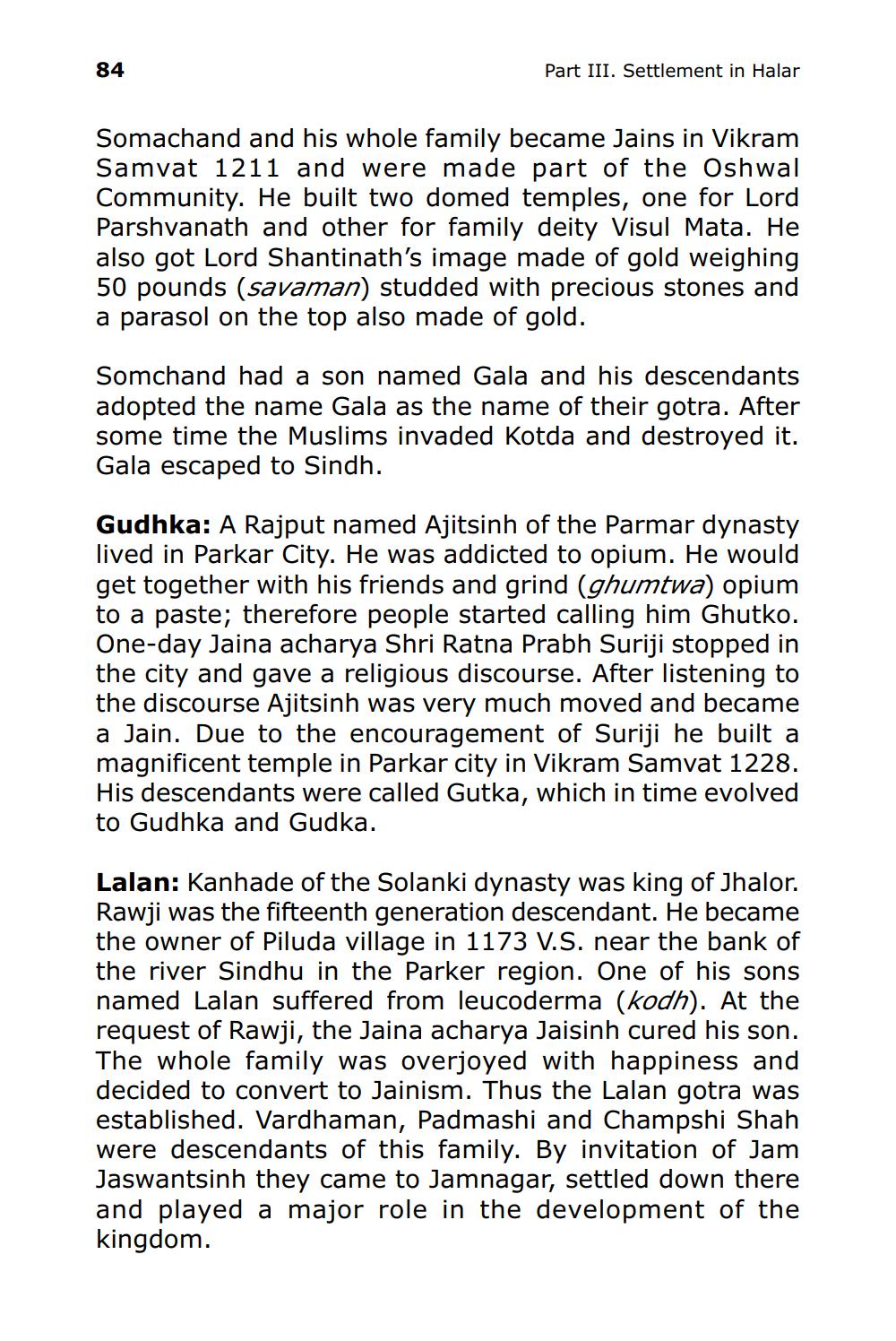________________
84
Part III. Settlement in Halar
Somachand and his whole family became Jains in Vikram Samvat 1211 and were made part of the Oshwal Community. He built two domed temples, one for Lord Parshvanath and other for family deity Visul Mata. He also got Lord Shantinath's image made of gold weighing 50 pounds (savaman) studded with precious stones and a parasol on the top also made of gold.
Somchand had a son named Gala and his descendants adopted the name Gala as the name of their gotra. After some time the Muslims invaded Kotda and destroyed it. Gala escaped to Sindh.
Gudhka: A Rajput named Ajitsinh of the Parmar dynasty lived in Parkar City. He was addicted to opium. He would get together with his friends and grind (ghumtwa) opium to a paste; therefore people started calling him Ghutko. One-day Jaina acharya Shri Ratna Prabh Suriji stopped in the city and gave a religious discourse. After listening to the discourse Ajitsinh was very much moved and became a Jain. Due to the encouragement of Suriji he built a magnificent temple in Parkar city in Vikram Samvat 1228. His descendants were called Gutka, which in time evolved to Gudhka and Gudka.
Lalan: Kanhade of the Solanki dynasty was king of Jhalor. Rawji was the fifteenth generation descendant. He became the owner of Piluda village in 1173 V.S. near the bank of the river Sindhu in the Parker region. One of his sons named Lalan suffered from leucoderma (kodh). At the request of Rawji, the Jaina acharya Jaisinh cured his son. The whole family was overjoyed with happiness and decided to convert to Jainism. Thus the Lalan gotra was established. Vardhaman, Padmashi and Champshi Shah were descendants of this family. By invitation of Jam Jaswantsinh they came to Jamnagar, settled down there and played a major role in the development of the kingdom.




